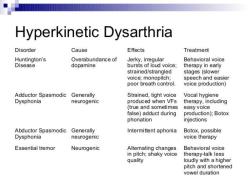Can cataract surgery correct a lazy eye?
Cataract surgery primarily aims to remove the cloudy lens (cataract) and replace it with an artificial intraocular lens (IOL) to restore clear vision. While cataract surgery itself is not designed to correct a lazy eye (amblyopia), it can have indirect benefits in certain cases.
Lazy eye, or amblyopia, often develops during childhood when one eye has significantly better vision than the other. The brain starts to rely more on the stronger eye, leading to reduced vision in the weaker eye. Amblyopia is generally treated during childhood through methods like patching the stronger eye to encourage the use of the weaker eye.
In some cases, a cataract in one eye may contribute to the development of amblyopia, especially if the cataract is present from an early age. Cataracts in children can cause visual impairment and may lead to amblyopia if not addressed promptly.
Cataract surgery in such cases can be beneficial in the following ways:
Removal of Visual Obstruction: Cataract surgery removes the cloudy lens that may be obstructing clear vision. This can help in improving visual acuity in the affected eye.
Correction of Refractive Errors: In some cases, cataracts are associated with refractive errors (e.g., nearsightedness, farsightedness). The intraocular lens implanted during cataract surgery can be chosen to correct these refractive errors, potentially improving overall vision.
Early Intervention: If a cataract is identified early in a child's life, cataract surgery can prevent or minimize the development of amblyopia by addressing the visual obstruction.
It's important to note that cataract surgery alone may not fully correct amblyopia, especially if it has already developed. Amblyopia treatment often involves additional measures such as vision therapy, eyeglasses, or patching to encourage the brain to use the weaker eye.
If you or someone you know is concerned about amblyopia or cataracts, it's recommended to consult with an eye care professional who can assess the specific situation and recommend appropriate interventions and treatments.
Cataract Surgery and Lazy Eye: Understanding the Connection
Cataract surgery and lazy eye, also known as amblyopia, are two separate eye conditions that can sometimes coexist. While cataract surgery primarily addresses the clouding of the lens, its impact on lazy eye can be complex and nuanced. Let's delve deeper into this intricate relationship and explore the answers to your questions.
1. Addressing and Correcting Lazy Eye with Cataract Surgery:
Limited Impact: Unfortunately, cataract surgery alone cannot fully "correct" a lazy eye. It primarily improves vision by removing the cloudy lens, but underlying amblyopia issues remain unaddressed.
Potential Improvement: However, cataract surgery can sometimes improve the vision in the lazy eye to a certain extent. By clearing the cloudy lens, it allows clearer light to reach the retina, potentially stimulating better visual development.
2. Visual Function Impact:
Improved Clarity: After cataract surgery, individuals with lazy eye may experience enhanced clarity and sharpness in the affected eye, but overall vision may not reach the level of the healthy eye.
Limited Binocular Vision: The underlying amblyopia can still hinder the brain's ability to merge visual information from both eyes, leading to poor depth perception and binocular vision.
3. Additional Treatments for Lazy Eye:
Early Intervention: Amblyopia treatment is most effective in childhood, typically before age 9. Common therapies include patching the stronger eye, glasses, and vision therapy exercises.
Combined Approach: For adults with lazy eye and cataracts, combining cataract surgery with amblyopia treatment is crucial. Vision therapy or patching can continue even after surgery to maximize potential visual improvement.
4. Considerations for Cataract Surgery with Lazy Eye:
Preoperative Assessment: A thorough eye examination by an ophthalmologist specializing in both cataracts and amblyopia is essential to evaluate the severity of both conditions and determine the best treatment plan.
Managing Expectations: Patients should understand that cataract surgery may not fully resolve lazy eye, and additional treatment may be necessary.
Long-Term Monitoring: Regular follow-up with the eye care professional is crucial to monitor vision changes and adjust amblyopia treatment as needed.
5. Tailoring Cataract Surgery for Lazy Eye Patients:
Specific Lens Choices: Ophthalmologists may choose intraocular lenses with additional features like prisms or filters to help improve alignment and function in the lazy eye.
Minimally Invasive Techniques: Using smaller incisions and advanced technology can minimize surgical trauma and potentially promote faster visual recovery in patients with amblyopia.
Individualized Care: Every patient's situation is unique, and treatment plans for cataract surgery with lazy eye should be tailored to their specific needs and goals.
Remember, consulting a qualified ophthalmologist specializing in both cataracts and amblyopia is crucial for personalized advice and treatment plans. They can guide you through the process, manage expectations, and help you achieve the best possible visual outcomes.












